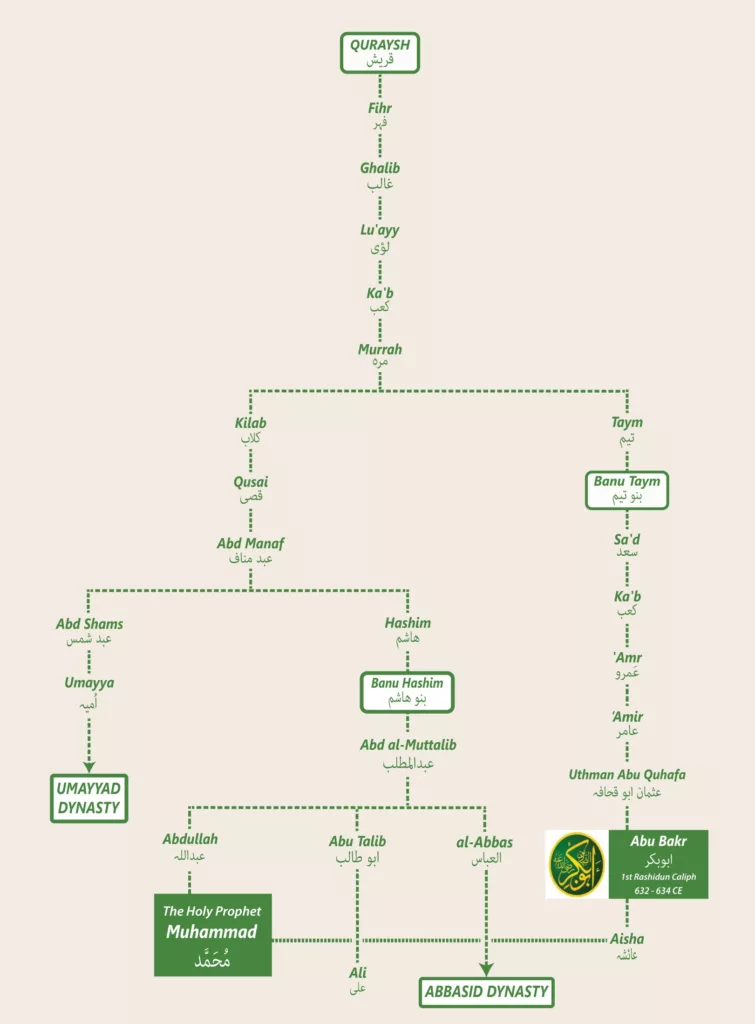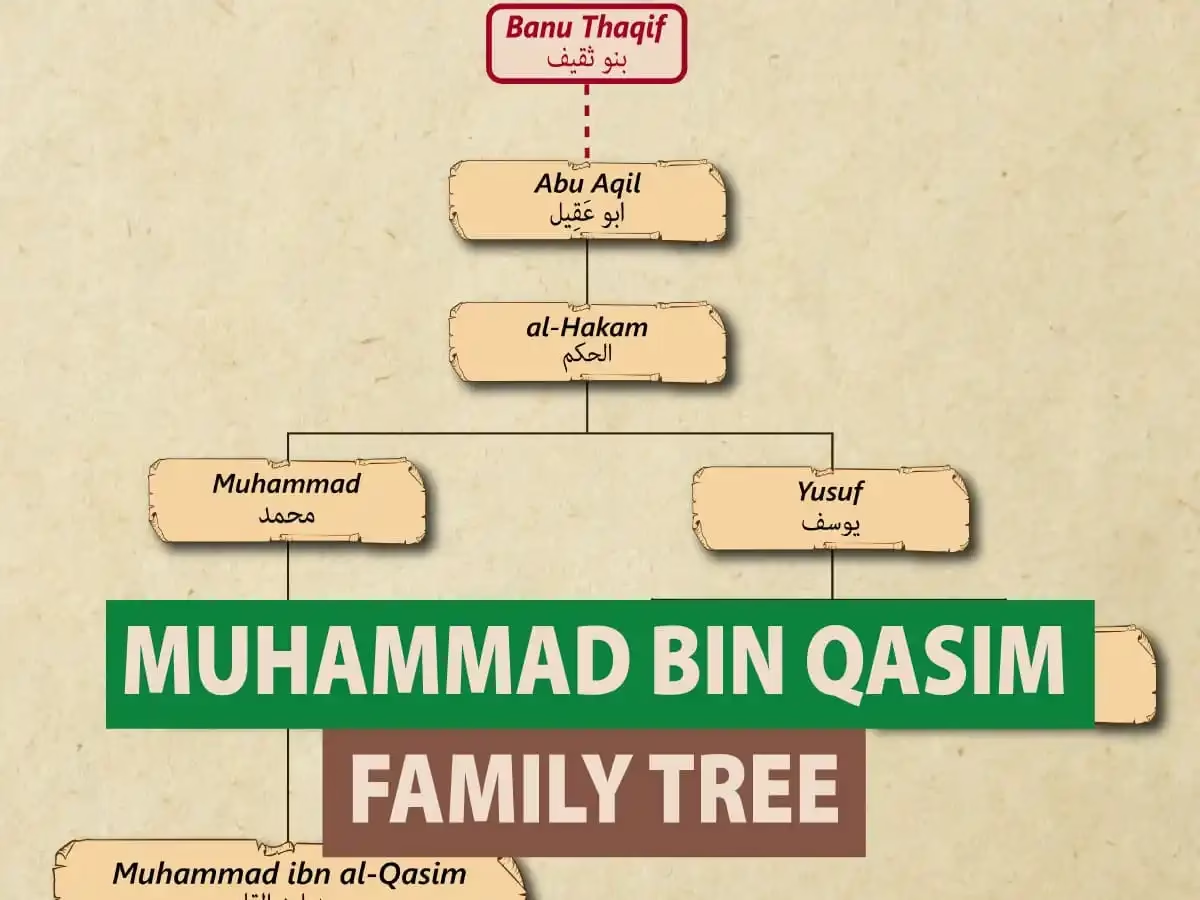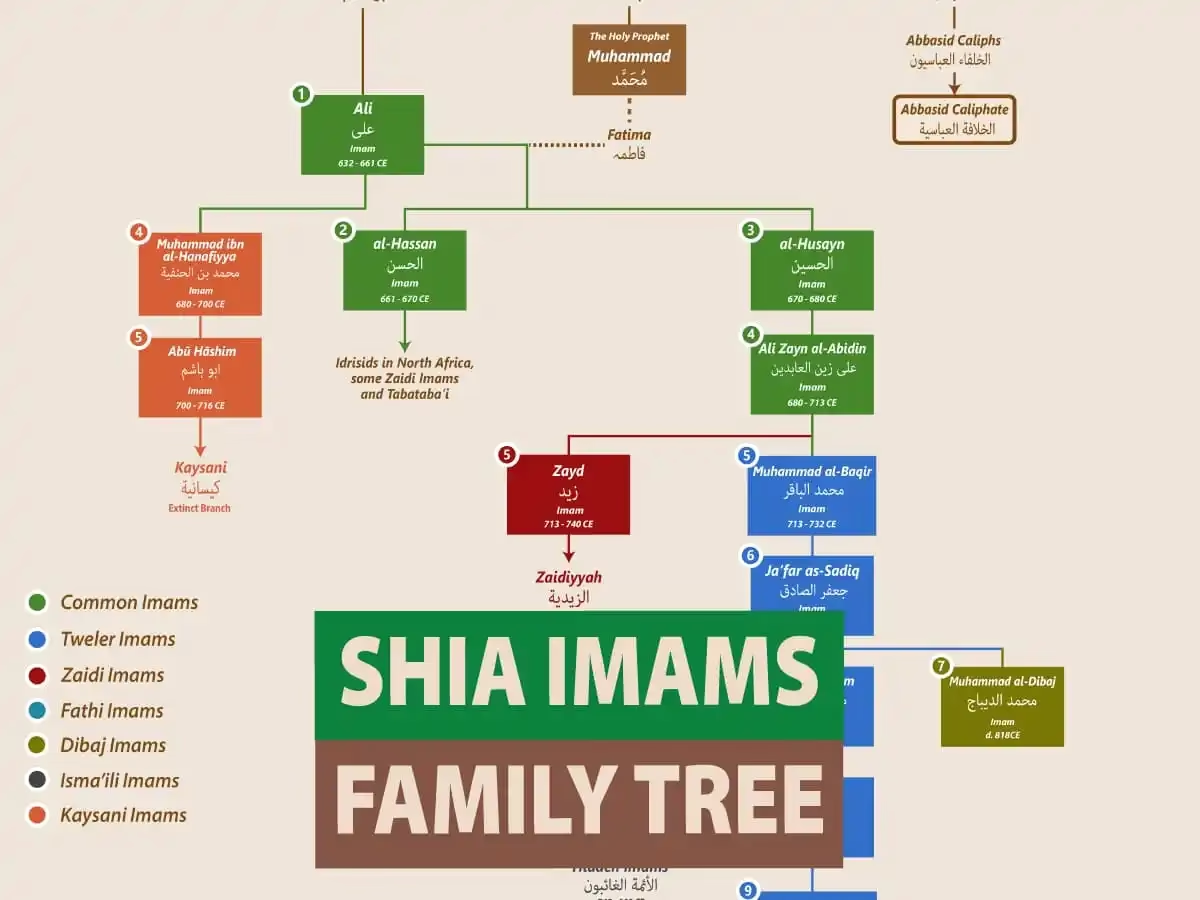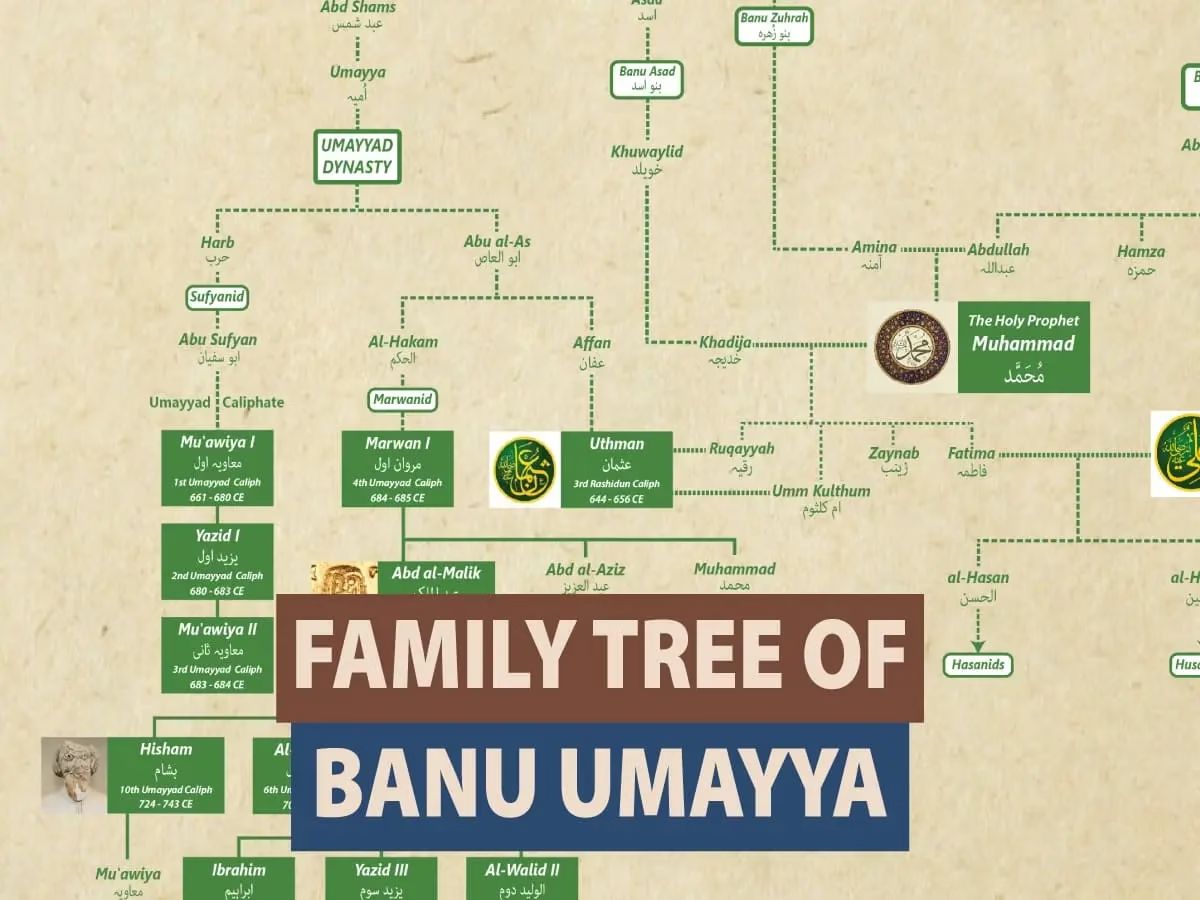The family tree of Aisha bint Abi Bakr traces her lineage through one of the noblest houses of Quraysh — the Banu Taym clan — linking her both by blood to Abu Bakr al-Siddiq, the first Caliph of Islam, and by marriage to Prophet Muhammad (PBUH) himself.
This ancestry reflects a powerful blend of faith, leadership, and devotion at the dawn of Islam.

The Quraysh Tribe
The Quraysh were the dominant tribe of Mecca, custodians of the Ka‘bah, and leaders in trade and politics.
From among their many clans emerged the Banu Taym, to which Abu Bakr and his daughter Aisha belonged.
The Quraysh traced their lineage back to Fihr ibn Malik, the progenitor of all Quraysh sub-clans, including Banu Hashim (the Prophet’s family) and Banu Taym.
Lineage of Aisha bint Abi Bakr
- Fihr ibn Malik – the common ancestor of Quraysh.
- Ghalib ibn Fihr, Lu’ay ibn Ghalib, and Ka‘b ibn Lu’ay – early patriarchs who consolidated Quraysh authority.
- Murrah ibn Ka‘b – father of Kilab and Taym, whose descendants led two key Quraysh branches.
- Taym ibn Murrah – founder of the Banu Taym clan, respected for integrity and wisdom.
- Sa‘d ibn Taym → Ka‘b ibn Sa‘d → ‘Amr ibn Ka‘b → ‘Amir ibn ‘Amr → ‘Uthman Abu Quhafa – the line that led directly to Abu Bakr.
- Abu Bakr al-Siddiq (Abdullah ibn Abi Quhafa) – the first Rightly Guided Caliph (r. 632–634 CE) and father of Aisha.
Aisha bint Abi Bakr
Aisha bint Abi Bakr (عائشة بنت أبي بكر) was born in Mecca around 613 CE into the noble Banu Taym clan.
She was the daughter of Abu Bakr al-Siddiq and Umm Ruman bint ‘Amir, and became one of the Mothers of the Believers after marrying Prophet Muhammad (PBUH).
Her Role in Early Islam
- Married to the Prophet in Medina, she became one of his closest companions and an authority on Hadith and Islamic jurisprudence.
- After the Prophet’s passing, she transmitted over two thousand Hadiths, making her one of Islam’s most reliable narrators.
- She was renowned for her intelligence, eloquence, and memory, teaching generations of Companions and scholars.
- Aisha also played a political role during the early Caliphate period, most notably in the events surrounding the Battle of the Camel (656 CE).
Relationship to Prophet Muhammad (PBUH)
Aisha’s connection to the Prophet was both familial and spiritual:
- Through her father Abu Bakr, who was the Prophet’s closest friend, supporter during the Hijrah, and father-in-law.
- Through her marriage, which strengthened the bond between the Prophet’s household and the early Muslim leadership.
Their shared ancestor Murrah ibn Ka‘b makes Aisha and the Prophet distant relatives within Quraysh — she from Banu Taym, he from Banu Hashim.
Her Legacy
Aisha bint Abi Bakr remains one of the most influential women in Islamic history.
Her scholarship, leadership, and insight continue to inspire Muslims worldwide.
She passed away in Medina around 678 CE (58 AH) and was buried in Jannat al-Baqi‘, near the Prophet’s Mosque.


